Of all the smells I know that conjure up beautiful landscapes, sweet fern (Comptonia peregrina) is right near the top. In this post I'll tell you everything you need to know abut using sweetfern, with a focus on the best part of the plant that doesn't get nearly as much attention as it deserves.

Cracking open a jar of the seeds and crushing them transports me to the peak of summer, walking out into open pine barrens, mini-berry rake in hand, scanning the ground for flushes of blueberries, the aroma of sweet fern leaves crushed underfoot wafting up like a scented red carpet welcoming me back every year.
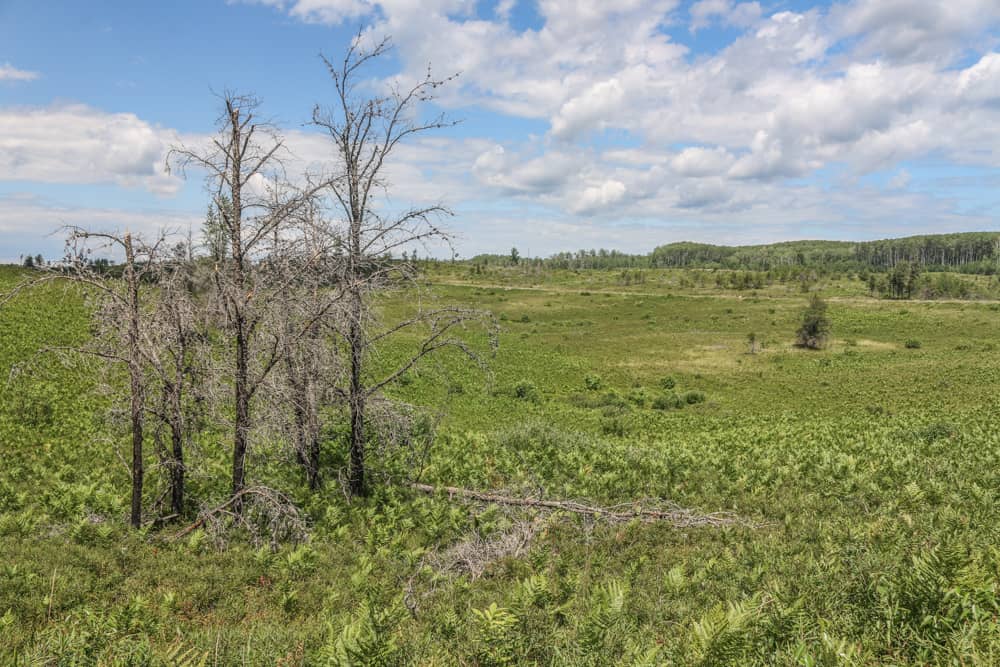
If you can picture the aroma of sweet fern right now, you might agree with me that it's a little hard to describe. I think the best description I can come up with is an aroma I put in the "resinous" category, as I do coniferous products like pine cones and needles, spruce tips, juniper and cedar, but with underlying warm spice to it.
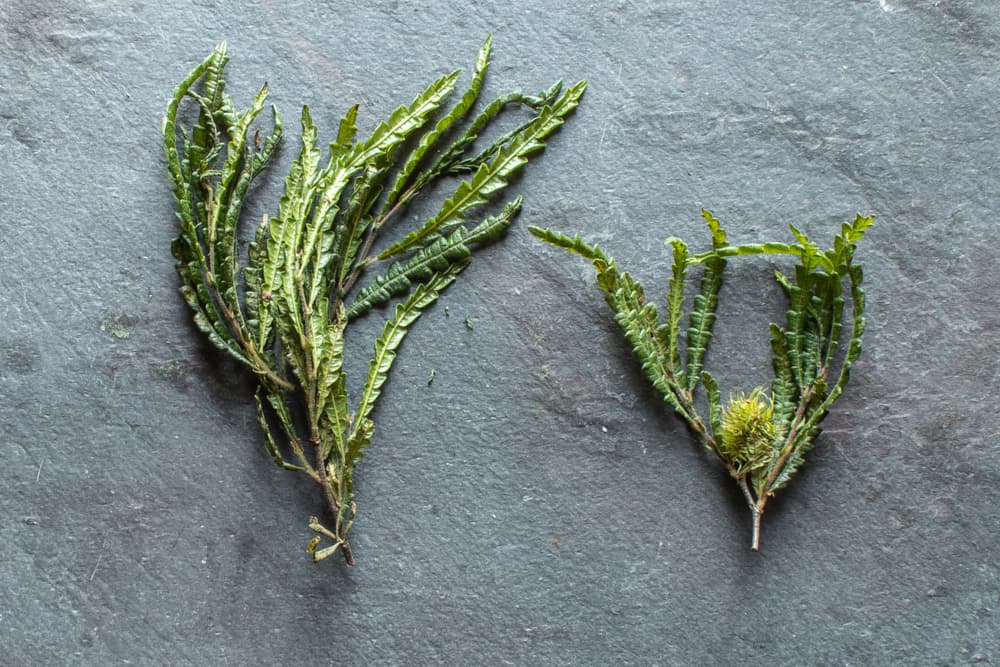
Myrica gale/sweet gale tastes similar and also has leaves and seeds that have been used for culinary purposes. I've also cooked with Myrica pensylvanica (sent over by my friend Ellen Zachos) and the aroma of them is in the same vein, but much milder than sweet fern.
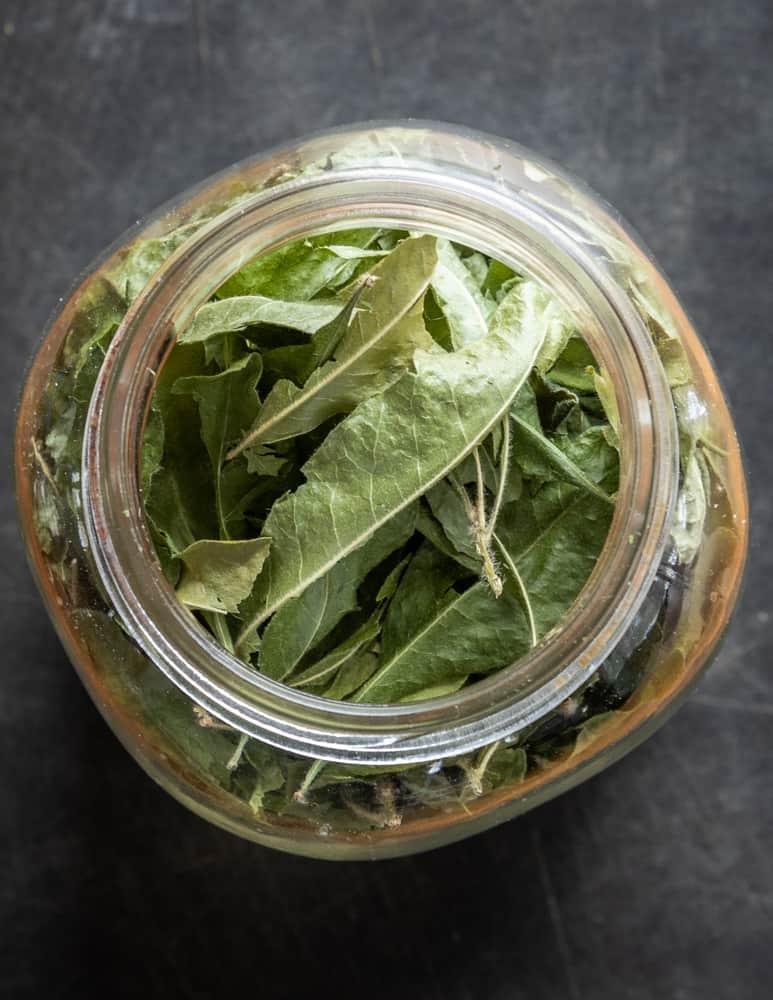
Sweet fern leaves are nothing new to wild food lovers. I harvested a good amount of the leaves for my distillery project this year, as well as for Sean Sherman's tea at his new restaurant Owamni. The leaves are a good aromatic, but, I don't think they're nearly as versatile as they're portrayed.
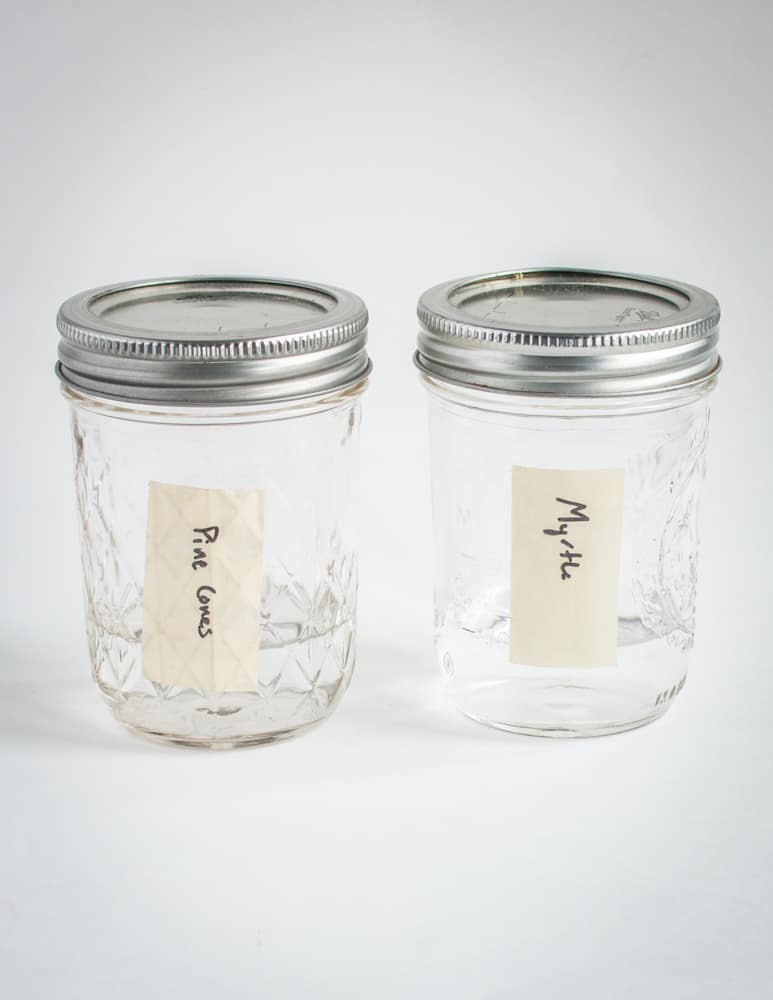
When a wild plant smells good, I think there's a tendency to assume it can be used just as you would any other herb. There are caveats though, the biggest to me being that sweet fern leaves are tough and not fun to chew.
I've seen recipes for things like compound butter and sauteed chicken made with sweet fern leaves, and personally, I think the leaves have the texture of grass clippings. I prefer using the leaves for their aroma only, discarding them after they've given their gift as you would a bay leaf.
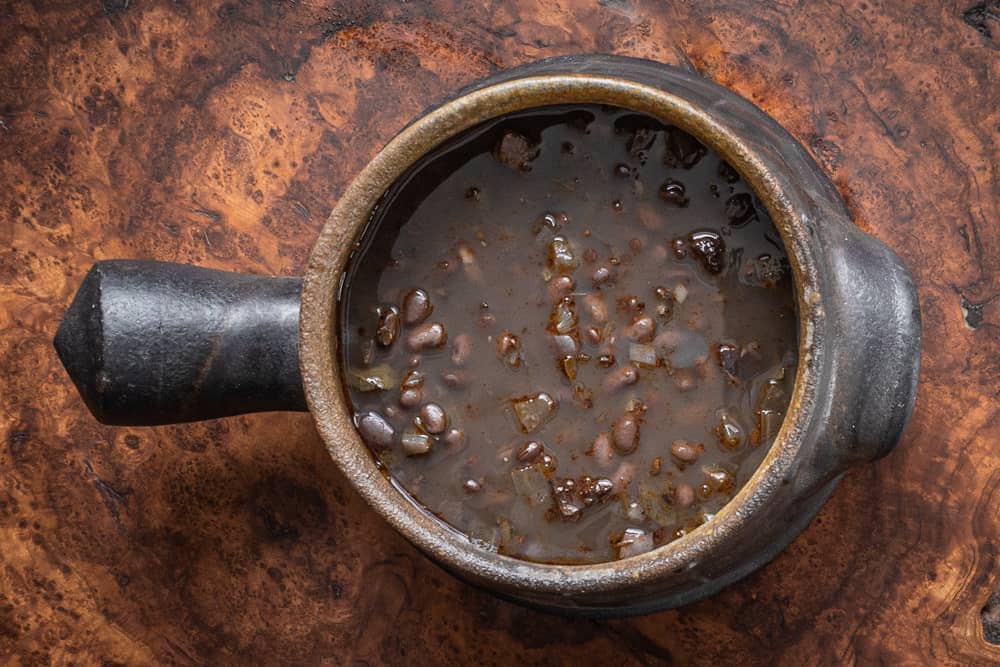
The leaves can give a great flavor to things where there is plenty of water for the aroma to infuse into, but extended infusions, and/or excess quantities will quickly make a liquid (soup, etc) bitter.
For a real-life example, I used only a couple generous handfuls of sweet fern leaves tied into a bouquet to flavor 25 pounds (dry weight) of my favorite Ramona's tepary beans for the 2021 Midwest Wild Harvest Festival. A little goes a long way.
Leaves vs Seeds
Big takeaway here. Sweet fern nutlets (nutlets is probably not botanically correct, but it's the most endearing name for the seeds I've found) are a different creature than the leaves, and I rarely, if ever, see people using them. Encased inside of what looks like a mini chestnut, the tiny seeds have the same aroma as the leaves, but are more concentrated.
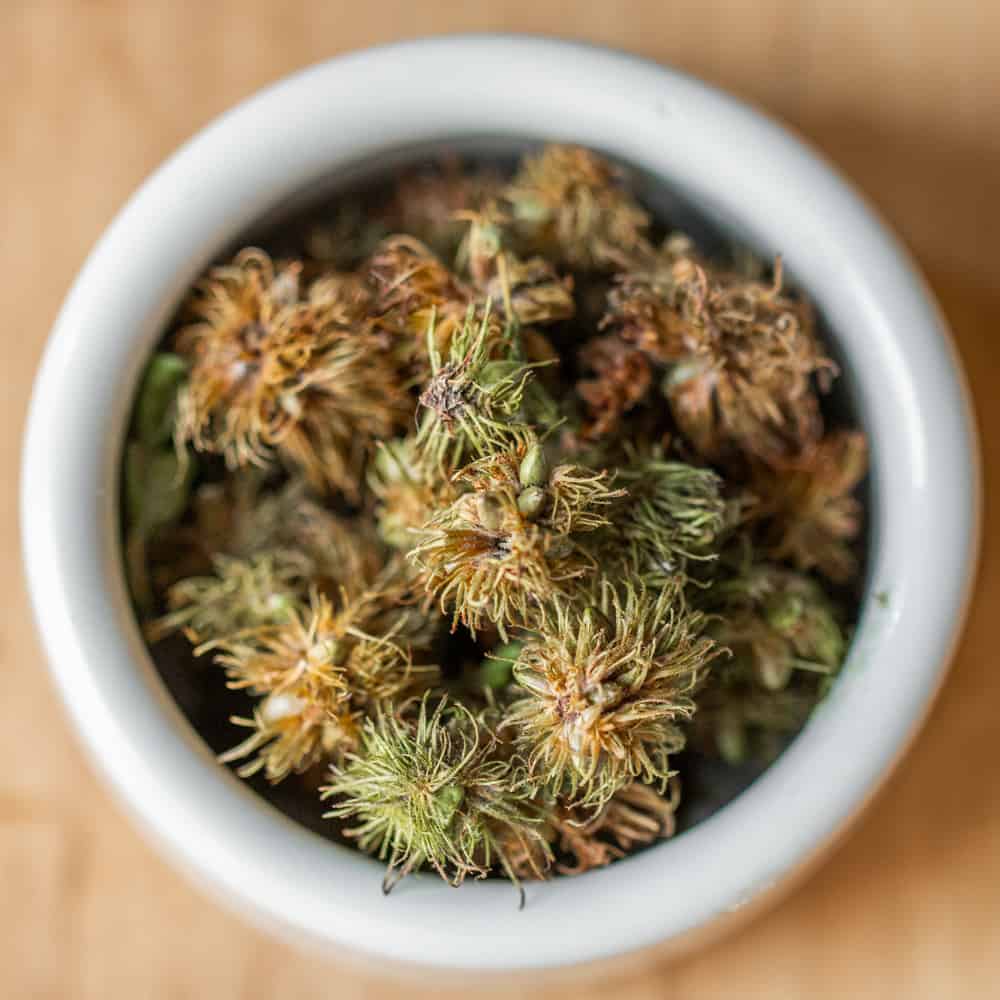
The seeds also dry well, don't take up a lot of space, and transfer their flavor when ground exactly like you'd expect when you want to season something with a spice or an herb, whereas the leaves, as I mentioned, I only use as a substitute for bay leaves in cooking.
If you've ever tried cooking with sweet fern leaves and not been impressed, or have heard people say "you can make that into tea!" and wondered if there's anything else, consider giving the seeds a shot.
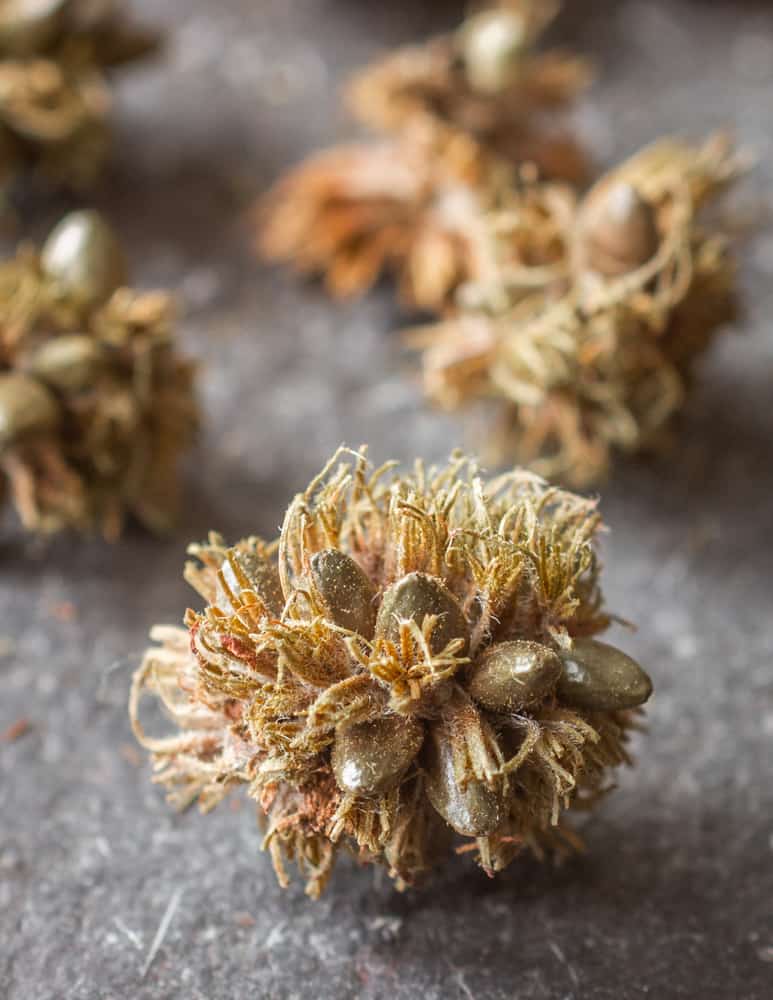
Harvesting
Sweet fern leaves are easy: snip a few leaves here and there from plants where you see them in large quantity. The seeds are more tricky.
In North-West Wisconsin and Northern Minnesota where I pick them (they love sandy, acidic soil, and I occasionally see them planted under evergreens in landscaping), sweet fern nutlets are ready to harvest at the exact same time the blueberries and serviceberries are, making them a good bonus harvest as they grow next to both fruits in the field.
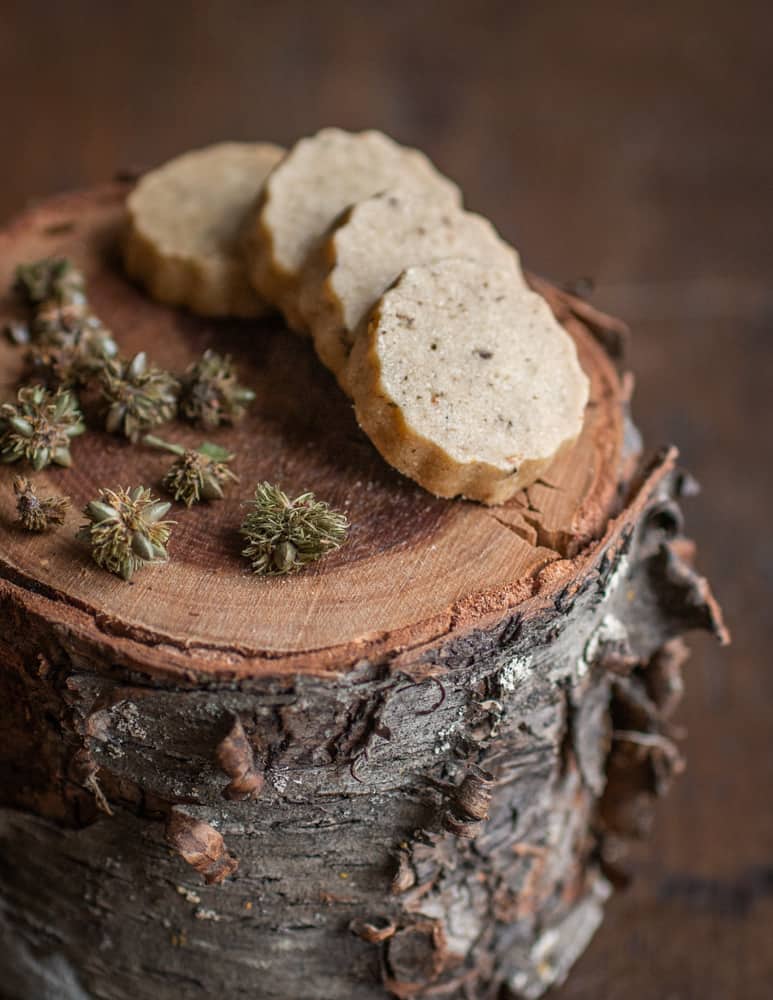
I usually look for blueberries around the last week of July and the first week of August, with some seasonal variation. Sweet fern seeds can be picked later in the summer too, but, as the companion fruits will be done at that time, and wild blueberries are probably the most bountiful wild fruit crop I know of, I'd just assume get them all at the same time.
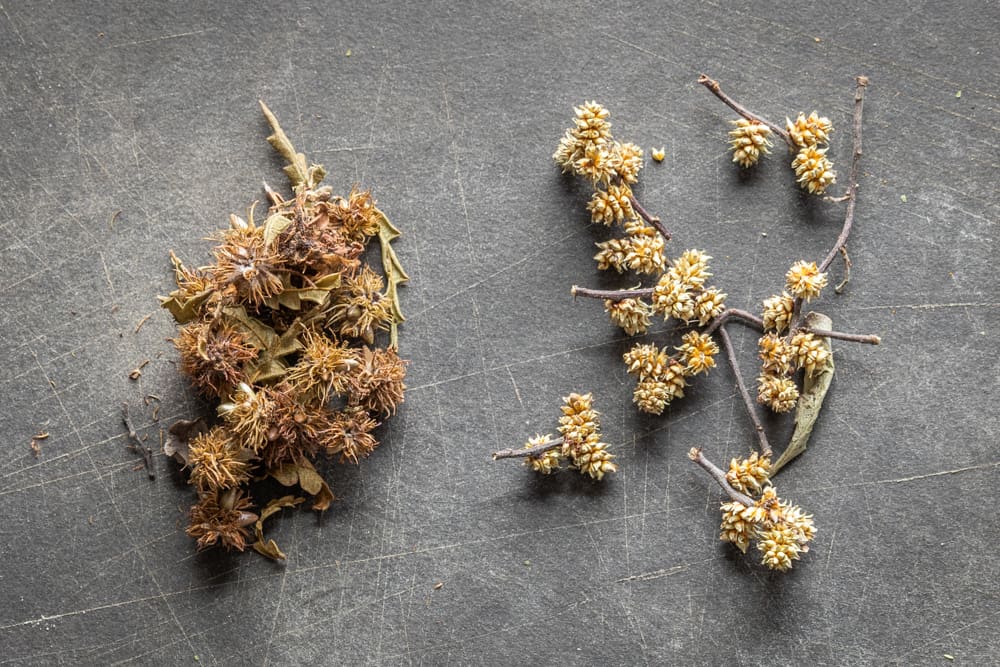
The only trick is finding enough sweet fern nutlets to be able to do something with. Not every plant seems to make nutlets, so you have to search for them.
The little burr-shaped orbs are teeny-tiny, with most plants only producing in the single digits, which could be part of the reason I, like most other people overlooked them at first, even though I knew the aroma was great and they probably had potential.
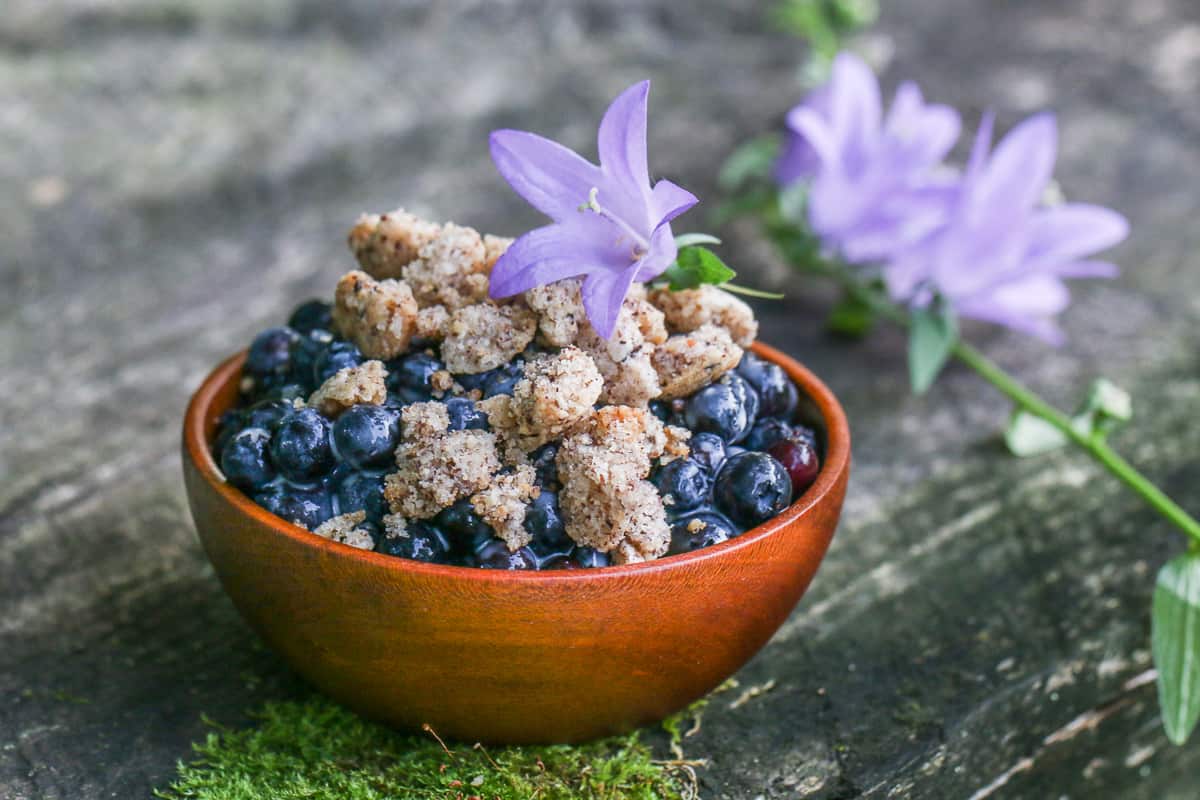
Look for "teenage barrens" or places with mature plants
Three years ago I felt like I cracked the code on the plant. Sam Thayer had brought me to a wild blueberry patch he brings his family to every year, and, the next year, not wanting to be a weasel and harvest from his spot, I was determined to find my own patch.
I ended up finding some blueberries, but the barrens I found were older than is ideal for a really bountiful blueberry harvest.
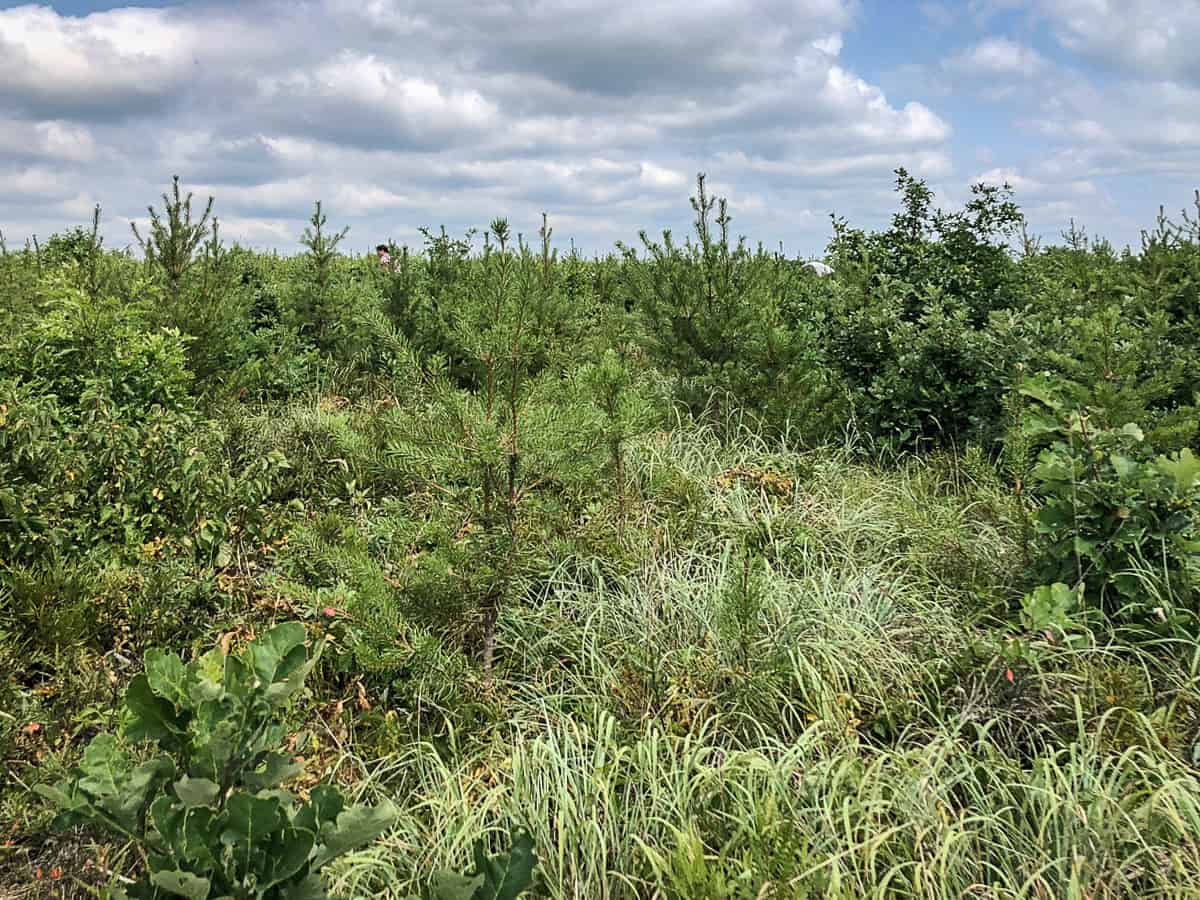
I wasn't in truly mature barrens, but they weren't young either, they were something in-between. Teenage pine barrens. The sweet fern in the teenage barrens was more mature, all the plants were taller, and, to my surprise, filled with more sweet fern shrubs bearing fruit, exponentially more than the younger, more recently burned barrens where you would expect a great harvest of wild blueberries.
Bring a berry rake
I started harvesting the nutlets by picking them off of the plant one-by-one, which gets pretty old fast. I'd heard of people harvesting certain herbs using a rake though, so I tried using my little blueberry rake to strip the sweet fern of it's fruit. It works really well, and I couldn't imagine doing it any other way now (for reference, this is the rake I use).
Using a rake, I remember bringing in multiple two-gallon bags of the the tiny chestnut balls to Chef Jonathan Gans at the Bachelor Farmer restaurant the summer I was supplying them. Just like with blueberries, the branches and leaves slip through the tines of the berry rake, leaving the plant uninjured.
Cooking
After I harvest my sweet fern seeds, I typically keep some in the fridge for using fresh, and I dry some on low heat (90 F until brittle, leaves can be dried similarly) After they're dried, I store the seeds in a mason jar at room temperature (although fridge will hold their aroma even better), and pull from them as needed, crushing them at the last minute before adding them to something. Fresh nutlets can also be frozen.
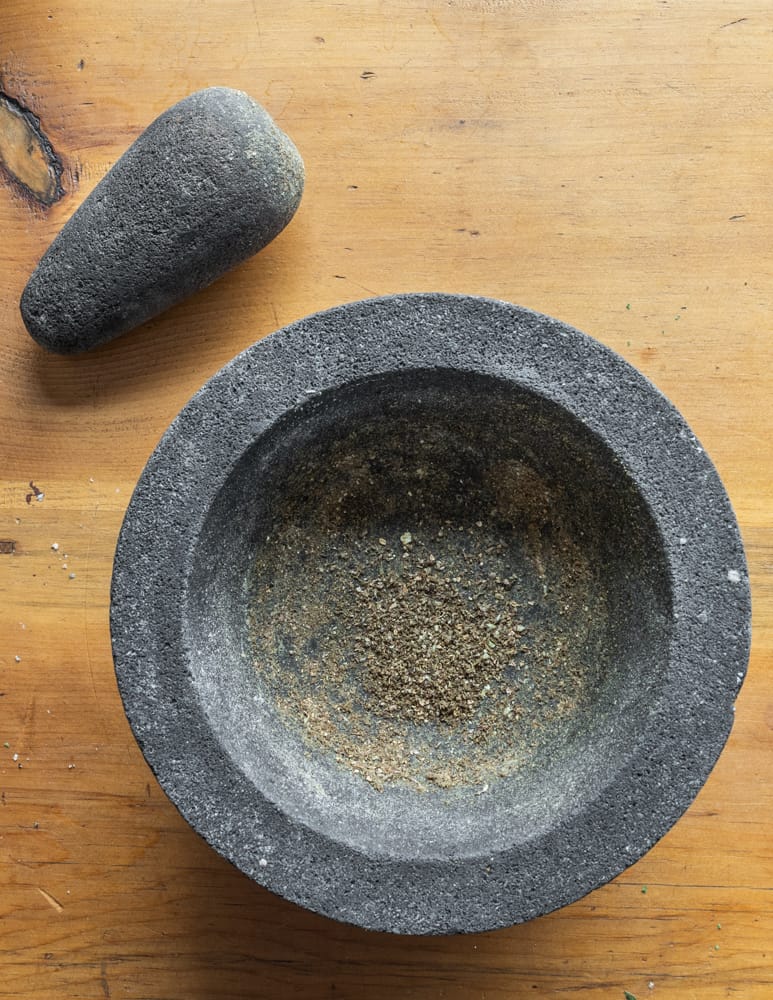
The only drawback to fresh nutlets is that I use as an aromatic, discarding them after cooking whereas the dried, brittle nutlets can be easily ground up in a spice grinder or mortar and pestle.
I grind the dried seeds, husk and all, and use the entire thing after it's powdered as winnowing them would be a chore.
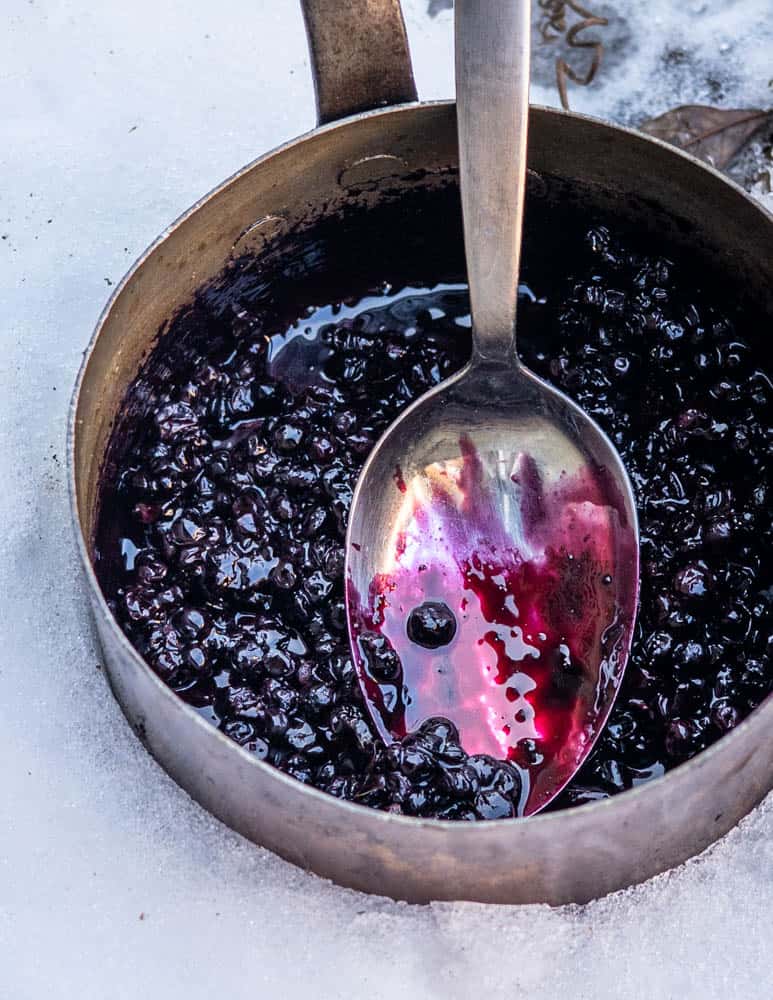
The seeds can be ground and put into all kinds of things where you would use a spice. One of my favorite places for them is in a simple shortbread cookie, but they also infuse very well into alcohol, and can make a great aromatic sip friends of mine have compared to herbsaint and other botanical-focused liquors.
Do you use this plant? Feel free to drop some comments with additional ideas and I'll update this over time. Some of my favorite recipes are linked or embedded below for reference.
Uses
- Sweet gale leaves and fruit were traditionally used to flavor alcohol. I've made simple infusions of sweet gale and sweet fern seeds and have enjoyed both.
- Ground and mixed into doughs, cookies and other baked goods, especially firm cookies like amaretti and shortbread.
- Seeds ground, wrapped in cheesecloth, and used to flavor beans (the leaves can be used dried or fresh here too, whole, discarded after they've flavored a dish).
- Ground and infused into cream by letting it sit overnight, then straining.
- In honor of the pine barrens, I use the nutlets to flavor a custard sauce that gets poured over fresh blueberries.
- Sweet fern is fun to use with plants that grow near it, like wild blueberries, serviceberries, and hazelnuts.
- The seeds are good infused into a sauce of fresh blueberries or serviceberries.
- It can be infused into cream, bruise some leaves, soak them in heavy cream overnight, then strain. Putting it into cream as it ferments into crème fraiche is even better.
Sweetfern Cookies
Ingredients
- 4 Tablespoons unsalted butter diced small
- ½ cup all purpose flour
- 2 teaspoons dried sweet gale or sweet fern nutlets
- Pinch of salt
- 2 Tablespoons maple sugar or brown sugar
Instructions
- Grind the nutlets to a fine powder in a coffee grinder, then combine with the remaining ingredients and mix into a smooth dough.
- Form the dough into a log, wrap in cling film and refrigerate overnight, or at least a few hours to hydrate the flour and ensure even cooking. If you haven't refrigerated cookie dough before, trust me, it's worth it.
- Preheat the oven to 350, cut the cookie log into ¼ inch slices, and bake for 8-10 minutes or until lightly browned, then cool and store at room temperature in a covered container.
Recipes
Wild Blueberry Sauce with Sweetfern
Wild Blueberry Sottobosco with Sweetfern Custard and Hazelnut Amaretti

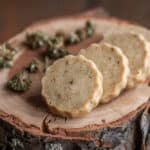
Noah
Ever use the winter bud?
the soft-scaly-pine cone looking thing that shows up in the springtime (don't know the proper botanical name for it) you can see some photos here
https://gobotany.nativeplanttrust.org/species/comptonia/peregrina/
Just got turned onto this plant, and the scent in the buds is incredible. Haven't met it during the summer time so I can't compare
Alan Bergo
No I haven't. Thanks for sharing that Noah.
Noah
No problem! thanks for the recipes.
I learned yesterday that the bud I was referring to is actually the male flower, called a catkin. Sweet fern has both male and female flowers.
Sean O'hAodha
Hi Tim,
Thanks for the wealth of information. Bdeo7ls the culinary application, have you heard that Sweet Fern can also be used to make a wonderful mosquito and Deer Fly repellant? I used to use it when I lived near Two Rivers, and spent most of my days out in the bogs and barrens.
Alan Bergo
Hey Sean thanks for commenting. I hadn't heard that!
Dotty
Brought back lovely memories of berry picking and the smell of sweet fern. I.would always put a few ferns on my berries and some in my pocket. As usual learned a fair bit. Thanks!
Eric Porter
Love the blog! I have made liqueurs out of myrica pensylvanica before, makes a great addition to an old fashioned, I’m sure you could do something similar with sweetfern. A blackberry sweetfern mead I’m working on is currently fermenting. Thoughts on using sweetfern in a cure for bacon/pancetta?
sassafras
My understanding is that the fresh leaves are used to line berry baskets to keep them fresh while harvesting blueberries. Once home the leaves can then be dried for later use.
I love sweet fern, it's staple for all my venison stews, bourgenons and soups, plus tea.
Jacqui
I would love to try sweet fern, which would require a trip to North America, but I have experimented a fair bit with sweet gale. Aside from steeping various plant parts in strong alcohol to make Danish "Porse snaps" I have ground up the nutlets or buds (when nutlets were not available) to use in spice cake. The best and most interesting spice cake I made combined spruce, wild carrot seeds and sweet gale. "Coolest cake ever made" according to my politically vegan and locavore son.
And just for information, Sweet fern, like sweet gale is dioecious. That means that whole plants produce either only female flowers or only male flowers. Because only the female plants produce fruits/nutlets this explains why many plants bear none. I have also noticed that nutlet-bearing plants in sweet gale can be rare, like, fewer than half the plants in most of the places I look, so either there are more males then females out there or the females take a break and may not flower every year, for example after a year of producing a lot of fruits/seeds.
Nemo
Great write-up Alan. It grows profusely here in our part of Maine and I've used it for years. We make a tincture that we use on black fly bites and as a mosquito repellent, make a heavy infusion in 100 proof vodka that soaks for a year to use as a vanilla extract substitute, make a wine out of it (that needs a couple years of aging ) and add it to a smoke blend of sweet fern, spearmint, catnip and blackberry leaves. I've never tried the "nutlets" on their own, but just pick them with the leaves, but am going to try them alone next year!
Alan Bergo
Thanks Nemo
Tim Merriman
I have picked wild blueberries in Michigan and wild strawberries in Ohio and Indiana. Both are plentiful and delicious. Thanks for the recipes
Alan Bergo
Thanks Tim
Janet
Sweet fern tincture [sweet fern soaked in grain alcohol] cures poison ivy rashes and bug bites when dabbed on the inflamed area of your skin
Alan Bergo
Thats fun.
Laura
My all-time favorite - what a transporting fragrance!!!
Alan Bergo
Yeah it's so good.
spwilcen
You are an amazing read! Thank you.
Alan Bergo
Thanks